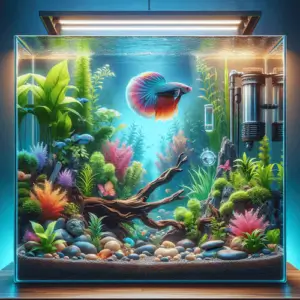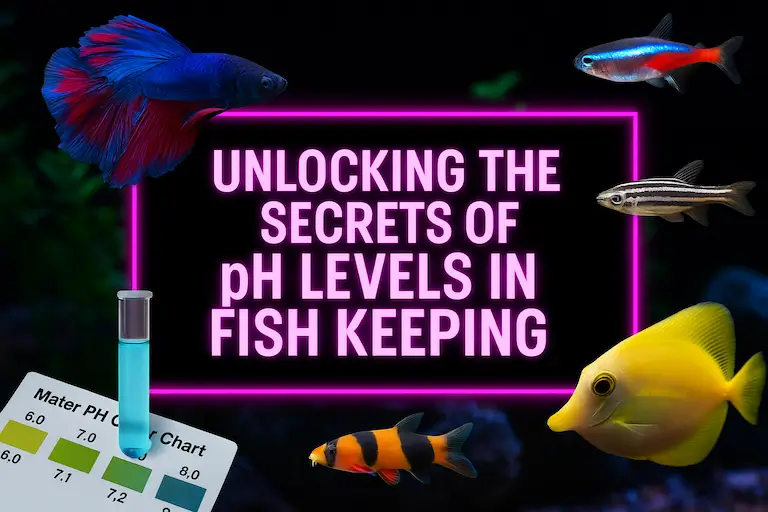Your In-Depth Guide to Dragon Sea Moths
What Are Dragon Sea Moths?
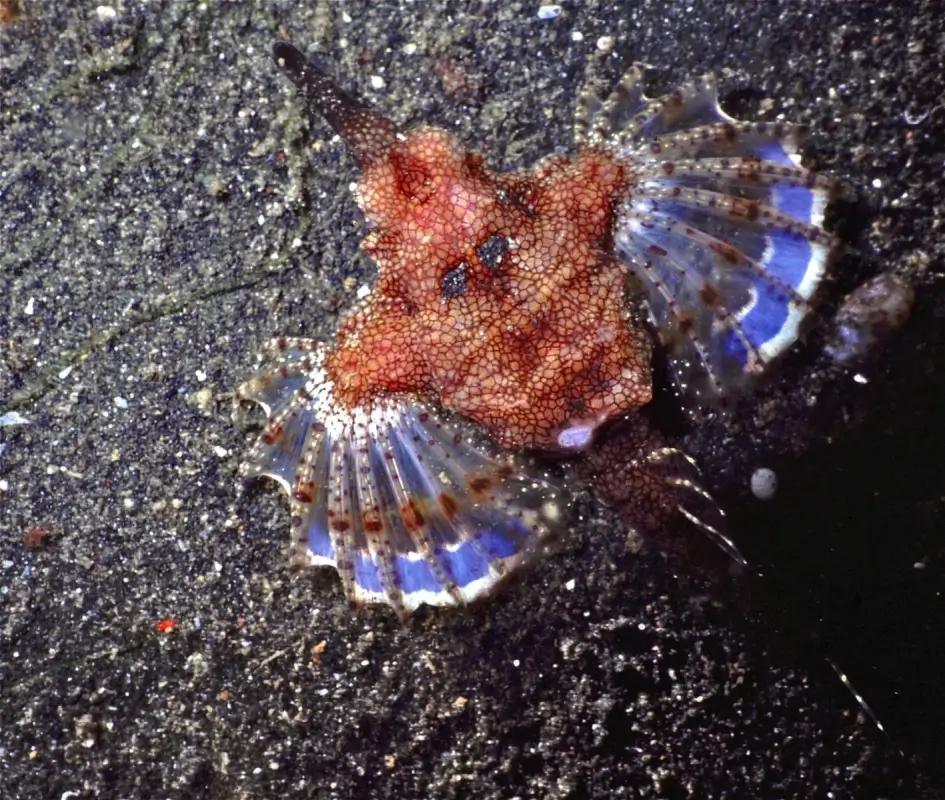
Key Characteristics:
• Appearance: Dragon sea moths have a distinctive, elongated body covered with bony plates. Their broad, wing-like pectoral fins are used for gliding along the substrate. They are typically mottled brown, grey, or beige, perfectly mimicking sand and rubble.
• Size: These fish are relatively small, reaching lengths of about 4-6 inches (10-15 cm).
• Behaviour: Dragon sea moths are slow-moving and spend most of their time on the substrate, using their fins to “walk” across the bottom.
Fascinating Adaptations
Dragon sea moths have evolved several remarkable adaptations that enable them to thrive in their natural habitats:
1. Camouflage:
• One of the most notable adaptations of dragon sea moths is their exceptional camouflage. Their coloration and bony plating allow them to blend perfectly with the sandy and rocky substrates of their environment, making them nearly invisible to predators and prey alike.
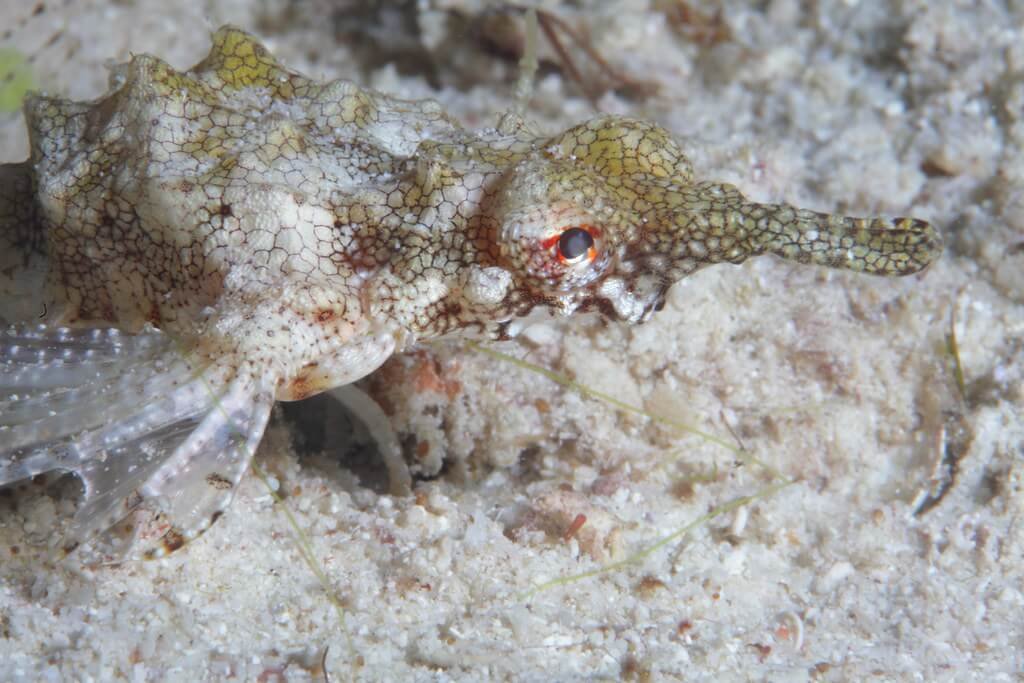
2. Locomotion:
• Unlike most fish, dragon sea moths use their modified pectoral fins to “walk” along the substrate rather than swim. This unique mode of locomotion helps them stay close to the bottom where they can search for food and avoid detection.
3. Feeding Mechanism:
• Dragon sea moths have a specialised, tube-like mouth that they use to suck up small invertebrates from the substrate. Their diet primarily consists of tiny crustaceans, worms, and other benthic organisms.
Role in Reef Ecosystems
In their natural habitats, dragon sea moths play a unique role in the ecosystem:
1. Predator-Prey Dynamics:
• As bottom-dwelling predators, dragon sea moths help control populations of small invertebrates. Their feeding habits contribute to the balance of benthic communities within the reef.
2. Ecosystem Health:
• By foraging on the substrate, dragon sea moths help aerate the sand and prevent the buildup of detritus, promoting a healthier environment for other reef inhabitants.
Related Articles:
- How to Keep a Mandarin Dragonet in Your Reef Aquarium: A Beginner’s Guide
- 6 Things I Wish I Knew Before Buying a Copperband Butterfly: The Ultimate Care Guide
- 6 Things You Need to Know Before Buying Seahorses
- Feeding Tangs in Your Reef Aquarium: A Guide to Keeping Your Fish Happy and Healthy
Care and Maintenance in Reef Tanks
Keeping dragon sea moths in a reef tank requires careful consideration of their specific needs and behaviours. They are best suited for experienced aquarists who can provide the necessary conditions for their survival.
1. Tank Setup:
• A well-established reef tank with ample live rock and a sandy substrate is essential for keeping dragon sea moths. They require a stable environment with plenty of hiding places and foraging grounds.
2. Water Parameters:
• Maintain water temperatures between 72-78°F (22-26°C), salinity levels of 1.023-1.025 specific gravity, and a pH of 8.1-8.4. Consistent water quality is crucial, as dragon sea moths are sensitive to changes in their environment.
3. Feeding:
• Dragon sea moths are specialised feeders that require a diet of live or frozen foods, such as mysis shrimp, copepods, and small crustaceans. It is important to provide a continuous supply of suitable prey items to ensure they receive adequate nutrition.
4. Compatibility:
• These fish are peaceful and should be kept with other non-aggressive, reef-safe tank mates. Avoid housing them with larger, predatory fish that may pose a threat.
5. Special Considerations:
• Dragon sea moths are best kept in species-specific tanks or with other slow-moving, bottom-dwelling fish to prevent competition for food. Regular monitoring is necessary to ensure they are feeding properly and adapting well to their environment.
Benefits of Keeping Dragon Sea Moths
For those willing to take on the challenge, dragon sea moths offer several unique benefits:
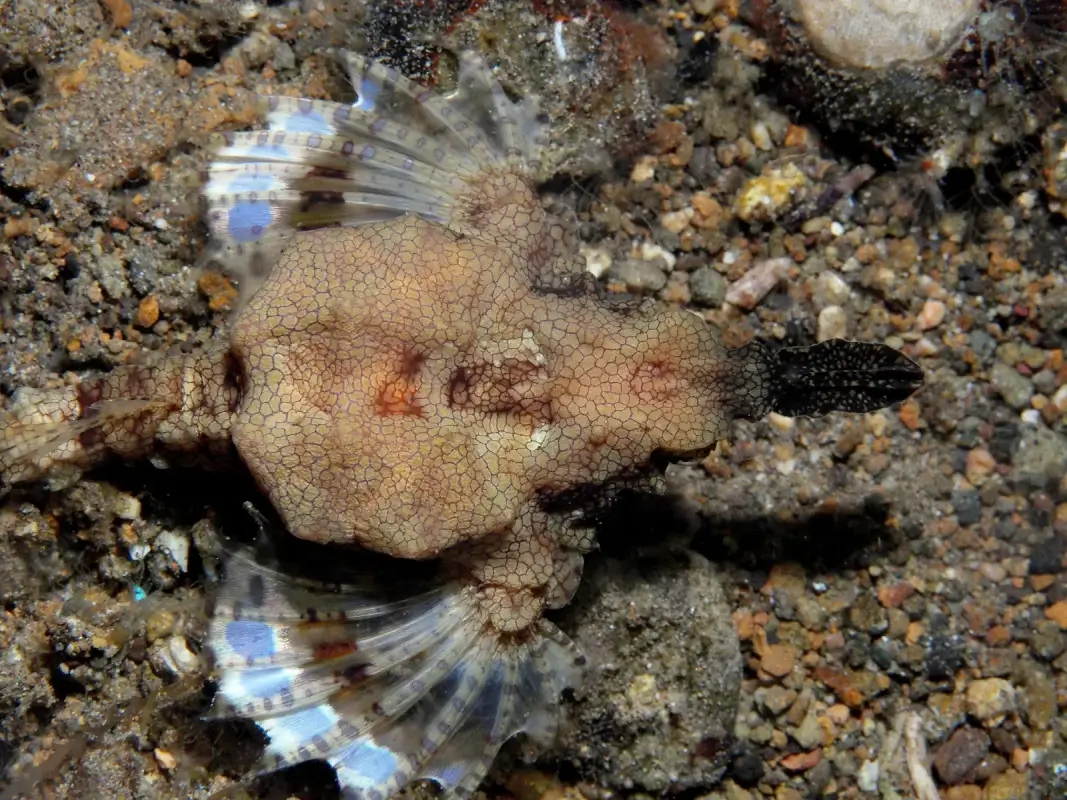
1. Unique Aesthetic:
• Their unusual appearance and intriguing behaviours add a distinctive element to the reef tank, captivating the interest of observers.
2. Ecological Insight:
• Observing dragon sea moths provides valuable insights into the adaptations and behaviours of bottom-dwelling marine species, enhancing our understanding of reef ecosystems.
3. Biodiversity:
• Introducing dragon sea moths to a reef tank contributes to the diversity of the aquarium, promoting a more complex and dynamic environment.
Conclusion
Dragon sea moths, with their remarkable camouflage and unique mode of locomotion, are truly the camouflaged creepsters of the reef. Their fascinating adaptations and specialised care requirements make them a challenging but rewarding addition for experienced reef keepers. By providing the appropriate environment and meeting their dietary needs, aquarists can enjoy the captivating presence of these enigmatic fish and gain a deeper appreciation for the diversity of life within reef ecosystems.


